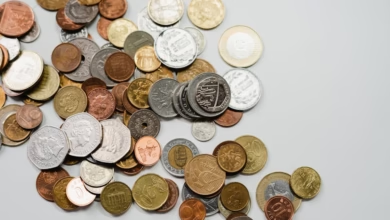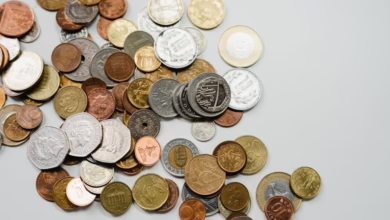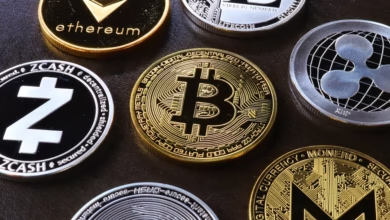The Gold Standard Revisited: Understanding Its Historical Role and Future Impact on Gold Investment Strategies

The historical significance of gold as a cornerstone of currency systems has shaped economies around the globe, establishing it as a symbol of wealth and stability. The gold standard, a monetary system where a country's currency or paper money has a value directly linked to gold, played a pivotal role in facilitating trade, influencing inflation rates, and shaping market dynamics. As we delve into the evolution of the gold standard, we will explore how gold-backed currencies have impacted economies and the reasons behind their eventual decline.
In today's financial landscape, gold remains a sought-after safe haven asset, with investors turning to gold bullion, coins, and ETFs amidst economic uncertainty and inflationary pressures. As we analyze historical trends and gold market dynamics, we'll also discuss the current and future implications of gold prices on investment strategies, particularly in light of innovations in gold technology and sustainable gold mining practices. With central banks accumulating gold reserves and the rising global demand for gold collectibles and luxury gold, understanding the intricate relationship between gold and modern finance is more critical than ever. Join us as we uncover the past, present, and future of gold in the context of currency values and investment opportunities.
- 1. The Evolution of the Gold Standard: How Gold Backed Currency Values Shaped Economies
- 2. Gold as a Safe Haven Asset: Understanding Historical Trends and Market Dynamics
- 3. The Future of Gold: Impact of Gold Prices, Central Banks, and Emerging Technologies on Investment Strategies
1. The Evolution of the Gold Standard: How Gold Backed Currency Values Shaped Economies
The evolution of the gold standard has played a crucial role in shaping global economies throughout history. Initially, gold was used in its physical form, such as gold coins, as a medium of exchange. This practice dates back to ancient civilizations, where gold's intrinsic value made it a trusted currency. As economies grew, the need for a more stable monetary system led to the formal adoption of the gold standard in the 19th century. Under this system, currencies were directly linked to specific amounts of gold, allowing for more predictable gold prices and promoting international trade.
Central banks began accumulating gold reserves to back their currencies, establishing confidence in their economic stability. This practice not only facilitated trade but also created a reliable measure of wealth, influencing gold investment trends. However, the gold standard had its drawbacks, particularly during times of economic strife and inflation. The rigid structure limited monetary policy flexibility, prompting central banks to explore alternative systems.
As a result, the gold standard was abandoned in the 20th century, leading to the rise of fiat currencies. Despite this shift, gold remains a safe haven asset, especially during periods of economic uncertainty and inflation. Investors often turn to gold as a hedge against market volatility, leading to increased global gold demand and the popularity of gold ETFs and gold futures.
Today, the gold market continues to evolve, with innovations in gold technology, sustainable gold mining practices, and gold recycling contributing to a more dynamic gold trade. Collectors also seek gold collectibles and luxury gold items, reflecting ongoing interest in gold jewelry and bullion as both investment opportunities and status symbols. Furthermore, the intersection of gold and cryptocurrency has spurred discussions on the future of money, highlighting gold's enduring significance in the financial landscape.
In conclusion, the historical use of gold to back currency values has profoundly influenced economic systems worldwide. As we navigate modern financial markets, the legacy of the gold standard remains relevant, guiding both investors and policymakers in understanding the value of gold in today's economy.
2. Gold as a Safe Haven Asset: Understanding Historical Trends and Market Dynamics
Throughout history, gold has been revered as a safe haven asset, particularly during periods of economic uncertainty. Understanding historical trends and market dynamics surrounding gold can provide valuable insights for investors today.
Gold's enduring appeal stems from its intrinsic value and limited supply, making it an attractive option for safeguarding wealth. During times of economic downturns, geopolitical tensions, or inflationary pressures, investors often turn to gold as a reliable store of value. This trend has been particularly evident during crises, where gold prices tend to surge as demand increases. For instance, the financial crisis of 2008 saw a significant rise in gold prices as investors sought stability, highlighting the metal's role as a hedge against market volatility.
In addition to being a traditional safe haven, gold has also evolved in response to modern investment strategies. Gold ETFs (Exchange-Traded Funds) and gold futures have emerged as popular financial instruments, allowing investors to gain exposure to gold without the need for physical possession. These vehicles have broadened access to gold investments and have contributed to the overall growth of the gold market.
The dynamics of global gold demand play a crucial role in shaping prices. Central banks, which hold substantial gold reserves, often adjust their holdings based on economic outlooks, further influencing market trends. For instance, in recent years, many central banks have increased their gold purchases as a strategic move to diversify their reserves and mitigate risks associated with fiat currencies.
Moreover, the rise of gold recycling and sustainable gold mining practices has also impacted the gold market. As global demand for gold jewelry and luxury gold items continues to rise, initiatives focused on ethical sourcing are becoming more prominent. This shift not only enhances the sustainability of gold mining but also addresses concerns surrounding gold smuggling and the illegal gold trade.
As we look toward the future, the interplay between gold and cryptocurrency is becoming increasingly relevant. While cryptocurrencies have gained popularity as alternative investments, gold remains a steadfast asset that offers stability and security. The ongoing dialogue about gold and inflation further emphasizes the precious metal's relevance in today's economic landscape.
In summary, gold's historical use as a safe haven asset is supported by a myriad of factors, including market trends, central bank actions, and evolving investment strategies. Understanding these dynamics can help investors make informed decisions in the ever-changing gold market, whether they are considering physical gold, gold coins investing, or exploring gold collectibles.
References:
– World Gold Council. (2023). Gold Demand Trends. [Link]
– International Monetary Fund. (2023). Gold Reserves and Central Bank Policies. [Link]
– Smith, J. (2023). The Evolution of Gold Investment in Modern Markets. Financial Times. [Link]
3. The Future of Gold: Impact of Gold Prices, Central Banks, and Emerging Technologies on Investment Strategies
As we look to the future of gold, several factors will significantly influence gold prices and investment strategies within the global gold market. Historically viewed as a safe haven asset, gold continues to attract investors, especially during periods of economic uncertainty and inflation. This section explores the impact of gold prices, central banks, and emerging technologies on investment strategies.
Central banks play a crucial role in shaping gold market trends. With many central banks increasing their gold reserves, the demand for gold is expected to rise, consequently driving prices higher. In 2023, central banks around the world were reported to have accumulated record amounts of gold, indicating a strong belief in its stability as a long-term store of value (World Gold Council, 2023). This trend suggests that central banks' purchasing strategies could significantly influence gold production and refining, impacting the overall gold market analysis.
In addition to central banks, emerging technologies are transforming how investors approach gold investment. Innovations in gold technology, such as blockchain, are enhancing transparency in the gold trade, making it easier to track gold bullion and gold coins. These advancements are particularly important for gold ETFs and gold futures, as they provide investors with new ways to engage with gold without needing to hold physical gold. Furthermore, the rise of gold recycling initiatives promotes sustainable gold mining practices by repurposing existing gold, reducing the need for new production and fostering a more environmentally friendly gold market.
The rise of cryptocurrency also poses an interesting dynamic for gold investors. As digital assets like Bitcoin gain traction, some investors are debating whether gold remains a superior safe haven asset. However, gold's tangible nature, historical significance, and intrinsic value continue to position it as a reliable hedge against inflation and market volatility. Gold coins and gold collectibles remain popular among investors looking for physical gold assets that can appreciate over time.
As global gold demand fluctuates due to economic conditions and technological advancements, investors must remain vigilant and adaptable. Analyzing gold market trends, understanding the implications of central banks' gold strategies, and leveraging new technologies will be essential for successful gold investing moving forward. Ultimately, the future of gold investment lies in a balanced approach that considers both traditional assets and the evolving landscape of digital currencies.
References:
World Gold Council. (2023). Central Bank Gold Demand. Retrieved from [insert link here]
In conclusion, the historical use of the gold standard has played a pivotal role in shaping global economies and financial systems. As we explored, the evolution of gold-backed currencies established a foundation that not only influenced market dynamics but also positioned gold as a safe haven asset during times of uncertainty. The ongoing fluctuations in gold prices reflect the complexities of the gold market, driven by factors such as central banks' gold reserves, gold mining practices, and emerging technologies in gold refining and recycling.
Looking ahead, gold investment strategies are evolving, particularly with the rise of gold ETFs and futures, providing investors with diverse avenues for participation in the gold market. The interplay between gold and inflation, as well as the increasing global demand for sustainable gold mining practices, highlights the necessity for a forward-thinking approach to gold trading. Moreover, the growing interest in luxury gold items, collectibles, and even the intersection of gold and cryptocurrency underscores the multifaceted nature of the current gold landscape.
As we navigate the future of gold, it is essential for investors to stay informed about gold market trends, refined analysis, and the potential implications of gold smuggling and illegal trade on the overall market. By understanding the historical context and current dynamics, investors can make informed decisions about gold coins, bullion, and physical gold investments, ensuring their strategies are resilient in an ever-changing financial environment. Ultimately, the legacy of the gold standard continues to influence modern monetary policies and investment behaviors, affirming gold's enduring status as a cornerstone of wealth preservation and financial security.





